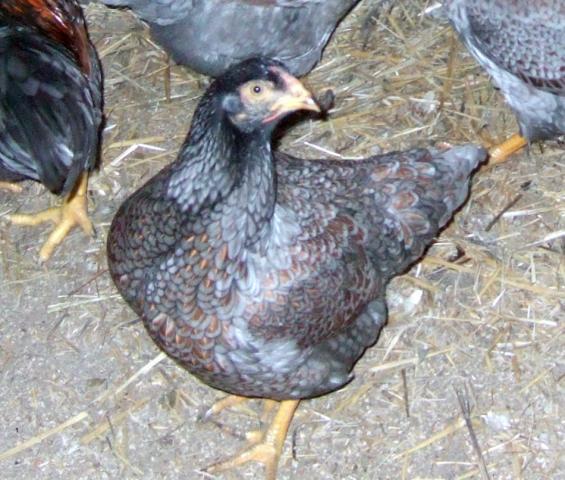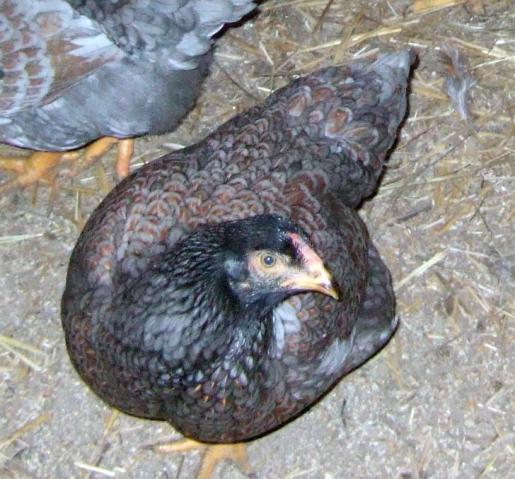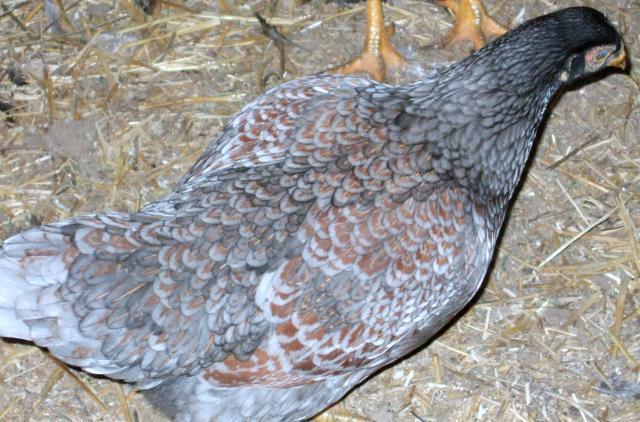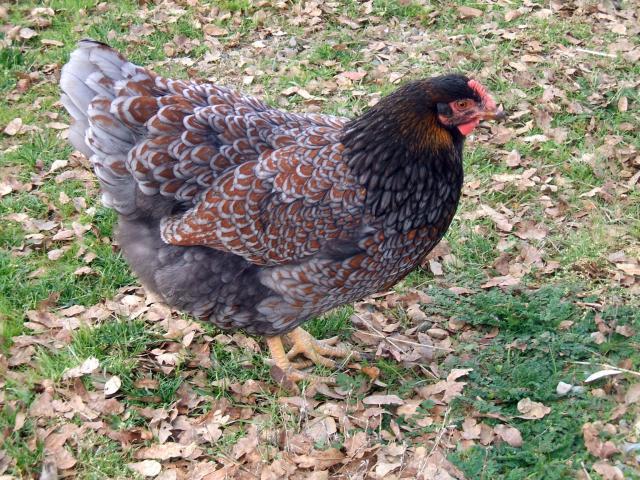Quote:
Do you mean Sir John Saunders Sebright?
Most likely the reason that the Silver Laced Wyandotte was once known as the "American Sebright" and "Sebright Cochin was do to the feather pattern (Black Lacing on a White feather)
The Bantam Sebright (Sebright Jungle Fowl) got is pattern from the Polish.
Sebrights were developed by Sir John Saunders Sebright,Bart., early in the 1800's, and is a true bantam only breed.After the death of Sir John an Article appeared in the Journal of Horticulture "It was about the year 1800 that the late Sir John Sebright first began to fashion the Sebright Bantam. The cross was between some common Bantams and the Polish fowl. These were bred in-and-in until the required marking and size were secured. Sir John then accidentally found a short-tailed Bantam cock in the country when he was traveling. This short-tailed bird he in-bred with his newly-manufactured. Bantams, thereby giving their progeny the present form of the short tail."
In thePoultry Chronicle it is stated that Sir John obtained a buff-coloured Bantam hen at Norwich ; she was very small indeed, with clear slate- coloured legs. On the same journey he purchased a cock rather inclined to red in colour, destitute of sickle-feathers, with a hen-like hackle ; and also, at Watford, a small hen resembling a Golden Hamburgh. He afterwards had a white cockerel from the Zoological Gardens, by which he made his Silvers. This description of the origin refers back before the laced marking was achieved. They were then known as Pheasant Bantams.
Again in the Poultry Chronicle, 1855
'The Sebright Bantam Club was formed some forty years ago by the late Sir John S. Sebright and several other fanciers, who endeavored, if possible, to obtain the beautiful plumage of the Polish fowl on as small specimens as could be. They (the late Sir John, the late Mr. Stevens, the late Mr. Hollingsworth, and Mr. Garlc, who still survives)began their labors by selecting the best kinds for their purpose of the Polish, and, by judiciously crossing them with Bantams, gradually obtained their end. They had to work out the top-knots,get rid of the hackles and long tail-feathers, and reduce the size ; retaining as much as possible the truly impertinent character of the Bantam. This has been most successfully accomplished, but not without the occasional recrossing with the Black Bantam, for the constant breeding in-and-in has often brought the birds to a stand-still."
Now I havent found much about the Hamburg but here is what I could find.
The Hamburgh is a very old race of domesticated poultry. The name of the breed is German, but the origin is Dutch. They were originally Classified among the Continental breeds, although, they owe their present shape and color qualities to the English fanciers, who, over a century ago, began the work of refining the "pheasant fowls" of that period into modern Hamburgs. The Black and Spangled varieties were evolved in England; the Penciled varieties came from Holland via Hamburg, Germany. The varieties of Hamburgh have been known under many names; Moonies , Pheasant , Bolton Grey , Bolton Bay, Creoles,Crees, Chittepratts, and Moss. A writer from the early 1700`s (Thomas Sutlief, 1702) mentions them in regard to Lancaster , where they referred to them as Black Pheasant, and the birds had white ears and flat combs. As an ornamental non-sitting fowl, they are good layers of white shelled eggs. Their skin color is white.
Above from North American Hamburg Society.
Chris
Do you mean Sir John Saunders Sebright?
Most likely the reason that the Silver Laced Wyandotte was once known as the "American Sebright" and "Sebright Cochin was do to the feather pattern (Black Lacing on a White feather)
The Bantam Sebright (Sebright Jungle Fowl) got is pattern from the Polish.
Sebrights were developed by Sir John Saunders Sebright,Bart., early in the 1800's, and is a true bantam only breed.After the death of Sir John an Article appeared in the Journal of Horticulture "It was about the year 1800 that the late Sir John Sebright first began to fashion the Sebright Bantam. The cross was between some common Bantams and the Polish fowl. These were bred in-and-in until the required marking and size were secured. Sir John then accidentally found a short-tailed Bantam cock in the country when he was traveling. This short-tailed bird he in-bred with his newly-manufactured. Bantams, thereby giving their progeny the present form of the short tail."
In thePoultry Chronicle it is stated that Sir John obtained a buff-coloured Bantam hen at Norwich ; she was very small indeed, with clear slate- coloured legs. On the same journey he purchased a cock rather inclined to red in colour, destitute of sickle-feathers, with a hen-like hackle ; and also, at Watford, a small hen resembling a Golden Hamburgh. He afterwards had a white cockerel from the Zoological Gardens, by which he made his Silvers. This description of the origin refers back before the laced marking was achieved. They were then known as Pheasant Bantams.
Again in the Poultry Chronicle, 1855
'The Sebright Bantam Club was formed some forty years ago by the late Sir John S. Sebright and several other fanciers, who endeavored, if possible, to obtain the beautiful plumage of the Polish fowl on as small specimens as could be. They (the late Sir John, the late Mr. Stevens, the late Mr. Hollingsworth, and Mr. Garlc, who still survives)began their labors by selecting the best kinds for their purpose of the Polish, and, by judiciously crossing them with Bantams, gradually obtained their end. They had to work out the top-knots,get rid of the hackles and long tail-feathers, and reduce the size ; retaining as much as possible the truly impertinent character of the Bantam. This has been most successfully accomplished, but not without the occasional recrossing with the Black Bantam, for the constant breeding in-and-in has often brought the birds to a stand-still."
Now I havent found much about the Hamburg but here is what I could find.
The Hamburgh is a very old race of domesticated poultry. The name of the breed is German, but the origin is Dutch. They were originally Classified among the Continental breeds, although, they owe their present shape and color qualities to the English fanciers, who, over a century ago, began the work of refining the "pheasant fowls" of that period into modern Hamburgs. The Black and Spangled varieties were evolved in England; the Penciled varieties came from Holland via Hamburg, Germany. The varieties of Hamburgh have been known under many names; Moonies , Pheasant , Bolton Grey , Bolton Bay, Creoles,Crees, Chittepratts, and Moss. A writer from the early 1700`s (Thomas Sutlief, 1702) mentions them in regard to Lancaster , where they referred to them as Black Pheasant, and the birds had white ears and flat combs. As an ornamental non-sitting fowl, they are good layers of white shelled eggs. Their skin color is white.
Above from North American Hamburg Society.
Chris














